A new five-inch (127mm) artillery rocket Lockheed Martin is developing for the U.S. Army primarily as a low-cost training round could evolve into an operational munition. The service already wants to increase the magazine depth of its existing Multiple Launch Rocket System (MLRS) and High Mobility Artillery Rocket System (HIMARS) launcher vehicles, which can currently fire various 227mm rockets and short-range ballistic missiles. This is part of a larger Army push to expand its overall rocket artillery capacity.
The new Joint Reduced Range Rocket (JR3) was showcased at the Army’s recent Project Convergence-Capstone 5 (PC-C5) test exercise at the National Training Center (NTC) at Fort Irwin in California earlier this month. Raytheon (now formally known as RTX) also notably fired a JR3 from a new uncrewed launcher vehicle it has been working on in cooperation with Forterra and Oshkosh Defense at PC-C5. The Army also released a picture from PC-C5, seen at the top of this story, showing its existing crewless Autonomous Multi-domain Launcher (AML), which is derived from the HIMARS, firing what looks to be a JR3. The AML and Raytheon’s new design are based on 6×6 Family of Medium Tactical Vehicles (FMTV) and FMTV A2 truck chassis, respectively.
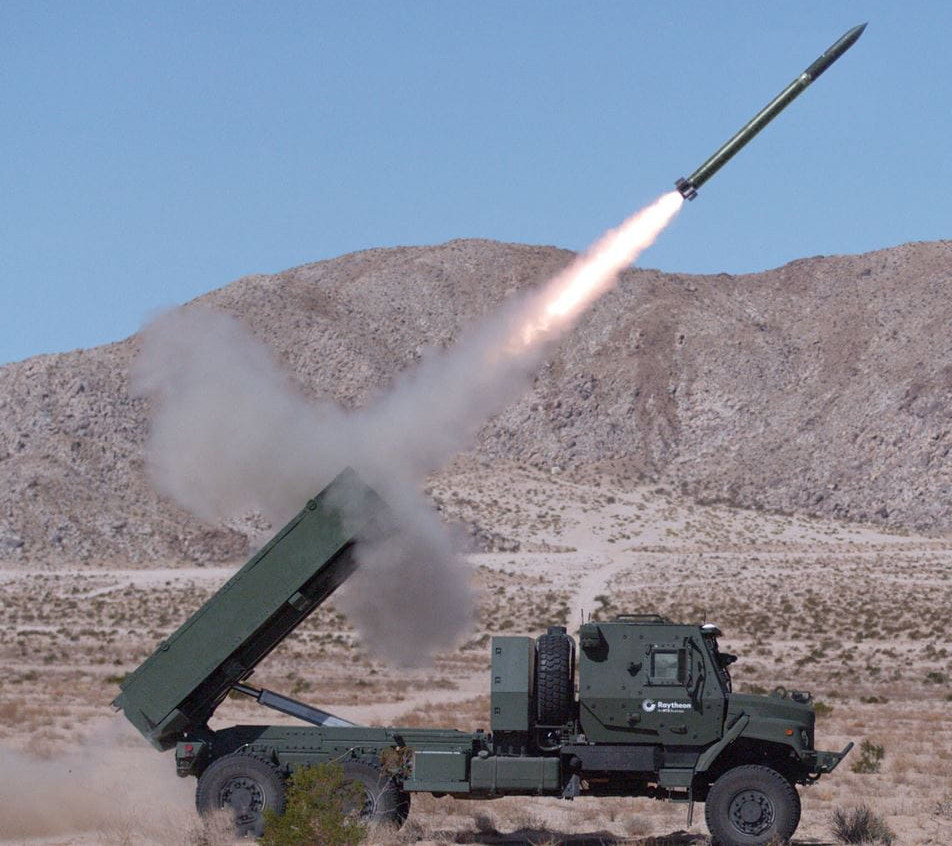 Raytheon’s new uncrewed launcher vehicle fires a JR3 at PC-C5. Raytheon
Raytheon’s new uncrewed launcher vehicle fires a JR3 at PC-C5. Raytheon 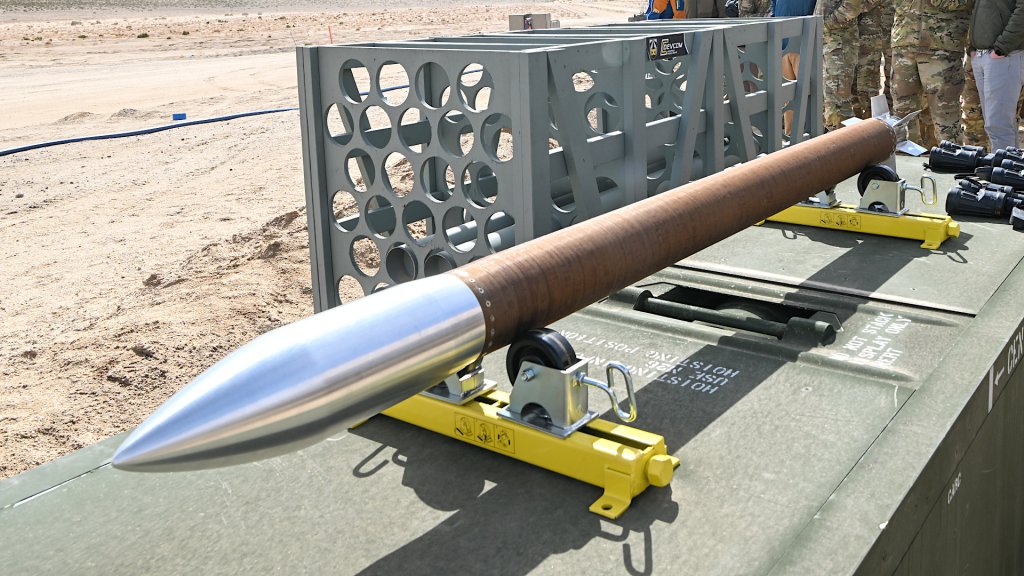 A JR3 on display at PC-C5. US Army
A JR3 on display at PC-C5. US Army Since the Army first kicked off the initiative in 2020, Project Convergence has been using events like PC-C5 to test, integrate, and network together new and improved weapons and other materiel, and do so in ever more operationally representative conditions.
JR3 is set to supplant the 227mm Low Cost Reduced Range Practice Rockets (LCRRPR) the Army, as well as the U.S. Marine Corps, use for training now. LCRRPRs use rocket motors taken from unguided 227mm M28A2 artillery rockets that were previously removed from service. However, the available stockpile of old M28A2s is expected to dry up by 2032, promoting the need for the JR3.
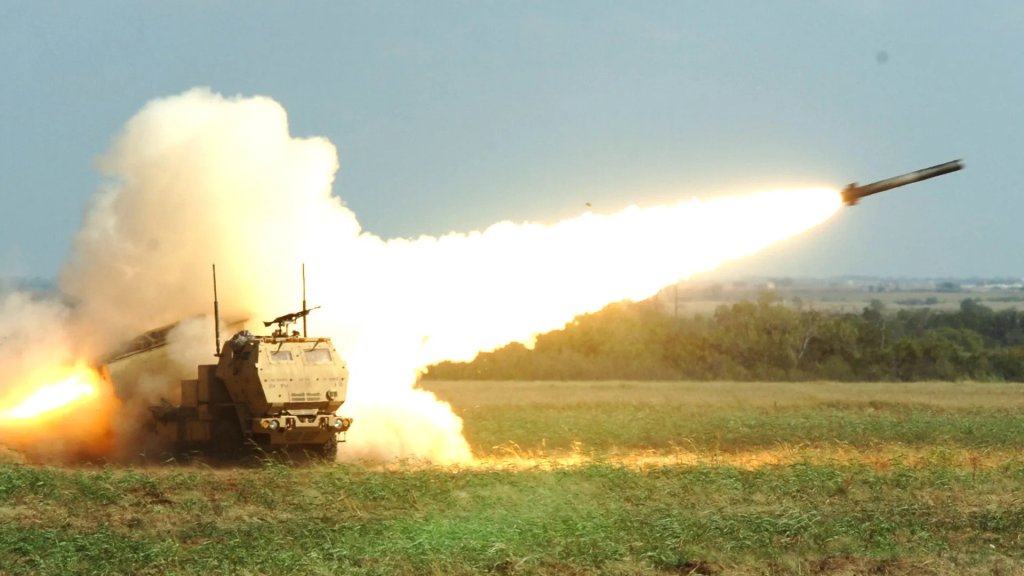 A HIMARS launch fires a 227mm reduced-range training rocket. US Army
A HIMARS launch fires a 227mm reduced-range training rocket. US Army In addition to being cheaper than full-up live rounds, reduced-range practice rockets allow units to make use of a greater number of more constrained ranges for live-fire training. The current slate of precision-guided 227mm rockets that existing MLRS and HIMARS launchers can fire have maximum ranges of between around 40 and 50 miles (65 and 80 kilometers). New types with ranges closer to 100 miles (150 kilometers) are also in development. Those same launchers can also fire Army Tactical Missile System (ATACMS) and Precision Strike Missile (PrSM) short-range ballistic missiles that can hit targets hundreds of miles away. The range the Army is targeting for the new JR3 is unclear, but existing LCRRPRs have a maximum reach of around 10 miles (16 kilometers).
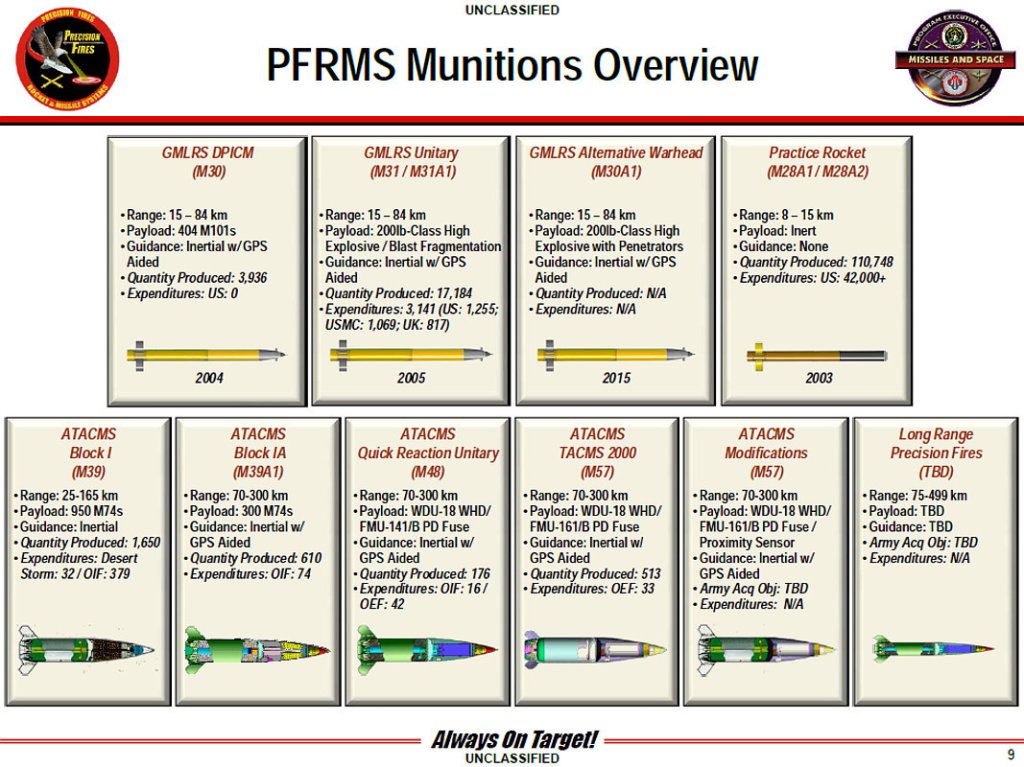 A now-dated briefing slide that still offers a good overview of existing rocket and ballistic missile options for the MLRS and HIMARS launchers. The Precision Strike Missile (PrSM) is the result of the “Long Range Precision Fires” program mentioned at bottom right. US Army
A now-dated briefing slide that still offers a good overview of existing rocket and ballistic missile options for the MLRS and HIMARS launchers. The Precision Strike Missile (PrSM) is the result of the “Long Range Precision Fires” program mentioned at bottom right. US Army Though designed primarily for training use, the JR3 has a modular design and Lockheed Martin has already talked about the potential for future variants or derivatives to be configured for use as live munitions.
“We’re definitely looking at [direct support fires technology] and how we could be a competitor in that market,” Dave Griser, Vice President for Guided Multiple Launch Rocket Systems within Lockheed Martin’s Missiles and Fire Control division, recently told Defense News. “We think we can play there in terms of how we produce, our production and our experience that’s unique to [MLRS family of munitions] and what we do. We think it’s a good fit for us.”
For its part, the Army has been very open about its interest in acquiring smaller artillery rockets to increase the magazine depth of its MLRS and HIMARS launchers. The munitions for those launchers come in standardized ‘pods’ that can hold six 227mm rockets, a single ATACMs, or two PrSMs. MLRSs can be loaded with two of those pods at a time, while HIMARSs can hold one.
 A mock-up of an ATACMS missile next to one of a standardized ammunition ‘pod.’ US Army
A mock-up of an ATACMS missile next to one of a standardized ammunition ‘pod.’ US Army  A PrSM short-range ballistic missile is fired from a HIMARS launcher. DOD A PrSM missile is fired from an M142 HIMARS launcher during a test. DOD
A PrSM short-range ballistic missile is fired from a HIMARS launcher. DOD A PrSM missile is fired from an M142 HIMARS launcher during a test. DOD“If you’re familiar with the rocket pods we have for [guided multiple launch rocket systems], I would like to fill those rocket pods with 50 to 100 rockets,” Army Gen. James Rainey, head of Army Futures Command, said at the Association of the U.S. Army’s Global Force Symposium on March 25, according to Defense News. “What we could put in that box … it’s not as good as [guided multiple launch rocket systems], but it can visit a lot of hate on the enemy in the right conditions.”
The Army has said in the past that it is actively looking at new munition pods for the MLRS and HIMARS launchers that can each hold up to 30 rockets with maximum ranges between approximately 18 and 25 miles (30 and 40 kilometers). Last month, it was announced that the service had awarded a contract to Anduril for 4.75-inch (120mm) solid rocket motors that is tied, at least in part, to that work.
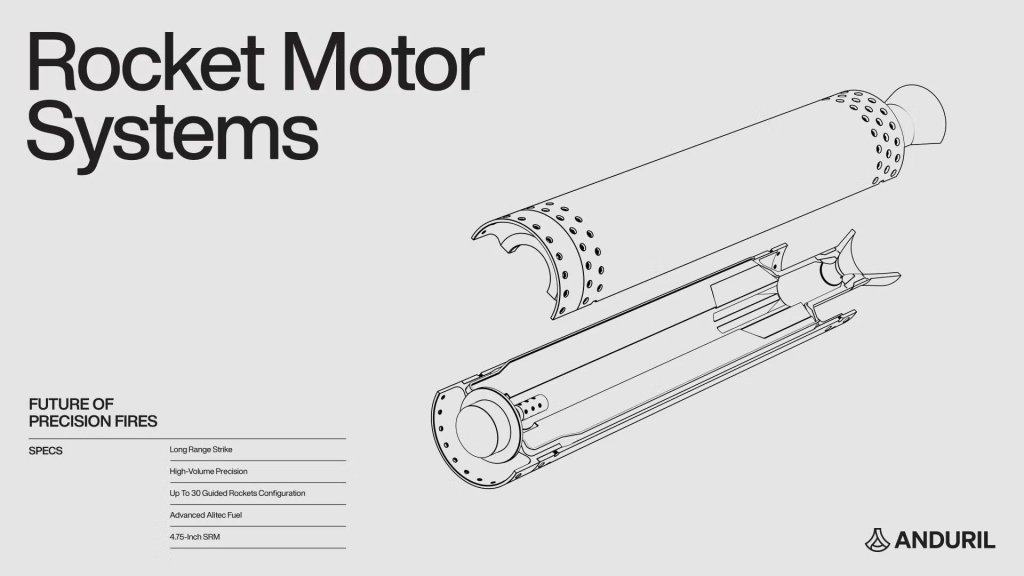 Anduril
Anduril A picture, seen below, also emerged last year showing a HIMARS launcher vehicle at the Naval Surface Warfare Center, Corona Division (NSWC-Corona) in Fallbrook, California loaded with a pod with 24 tubes. Whether or not that pod is related to work on the JR3 or other munitions is unclear.
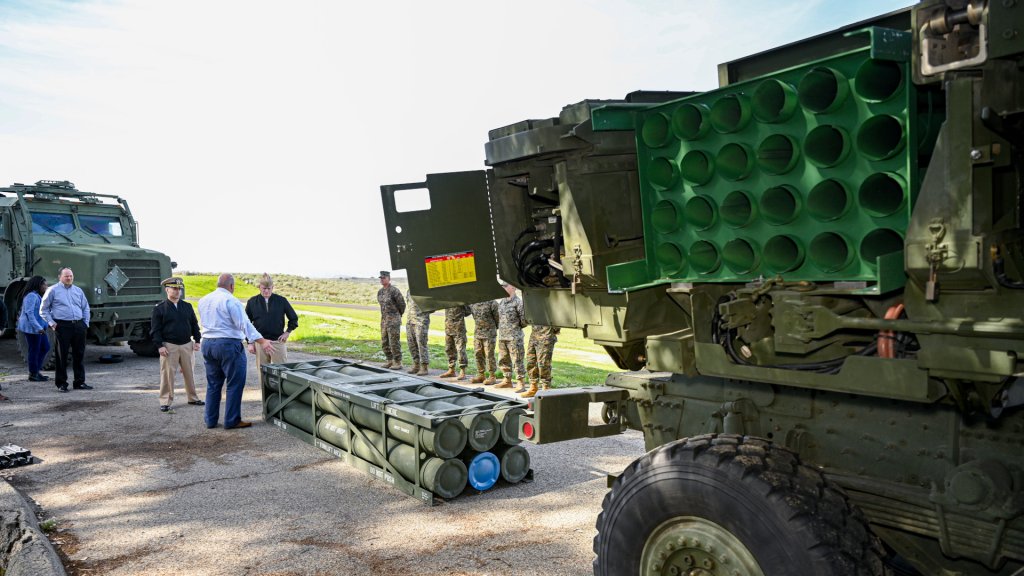 USN Neil Mabini
USN Neil MabiniIt’s also worth noting here that the Israel Defense Forces (IDF) has fielded AccuLAR-122 pods, which can hold up to 18 122mm rockets, in inventory as an option for its MLRS launchers. Soviet pattern 122mm artillery rockets and similar designs are in widespread use globally, despite the current absence of munitions in this general class in U.S. military arsenals.
New launchers able to fire new smaller artillery rockets, as well as existing 227mm types and ATACMS/PrSM missiles, also increasingly look to be on the horizon for the Army, as well as the Marine Corps. The Raytheon’s recently unveiled launcher and the AML design the Army has been working on for some time now reflect growing interest in uncrewed types.
 The prototype AML launcher vehicle. US Army The Autonomous Multi-domain Launcher (AML) prototype. US Army
The prototype AML launcher vehicle. US Army The Autonomous Multi-domain Launcher (AML) prototype. US ArmyThere is also the 4×4 Remotely Operated Ground Unit for Expeditionary Fires (ROGUE-Fires) derived from the Joint Light Tactical Vehicle (JLTV), which Oshkosh Defense developed primarily for the Marines. ROGUE-Fires variants armed with Naval Strike Missile (NSM) anti-ship cruise missiles and Tomahawk land-attack cruise missiles are already in Marine Corps service. A version of ROGUE-Fires that can fire munitions from the same pods as the MLRS and HIMARS launchers is in development, as well, and Oshkosh is now pitching it to the Army.
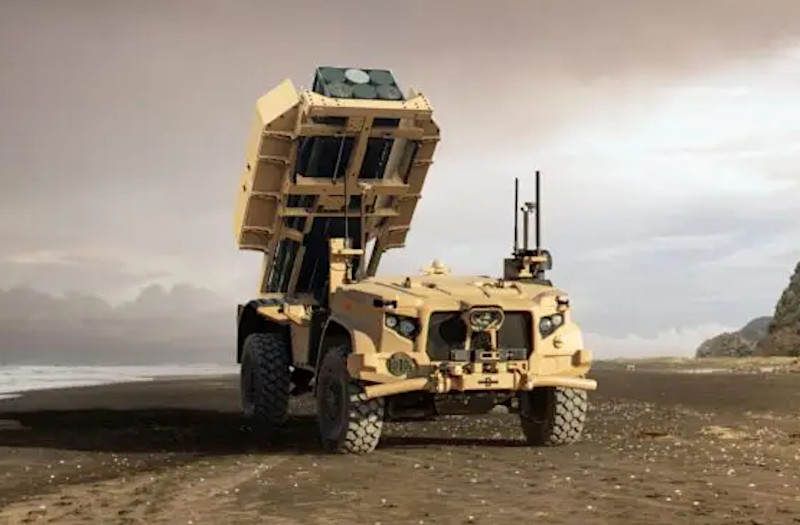 A promotional graphic of a ROGUE-Fires vehicle with an MLRS/HIMARS munitions pod. Oshkosh Defense
A promotional graphic of a ROGUE-Fires vehicle with an MLRS/HIMARS munitions pod. Oshkosh Defense Uncrewed launchers could help expand rocket artillery capacity without the need for significantly larger numbers of personnel. They could also be pushed further forward with less risk to human operators. This could all be particularly valuable in combination with smaller, but shorter-range rockets.
New crewed launcher vehicles could be part the equation, as well. Last year, Lockheed Martin also unveiled a new palletized ground-based launcher concept based on the Marine Corps’ 10×10 MKR18 Logistics Vehicle System Replacement (LVSR) truck and that can be loaded with up to four MLRS/HIMARS munition pods at once. With four pods each loaded with 30 smaller rockets, that system could pack a whopping 120 rounds in total.
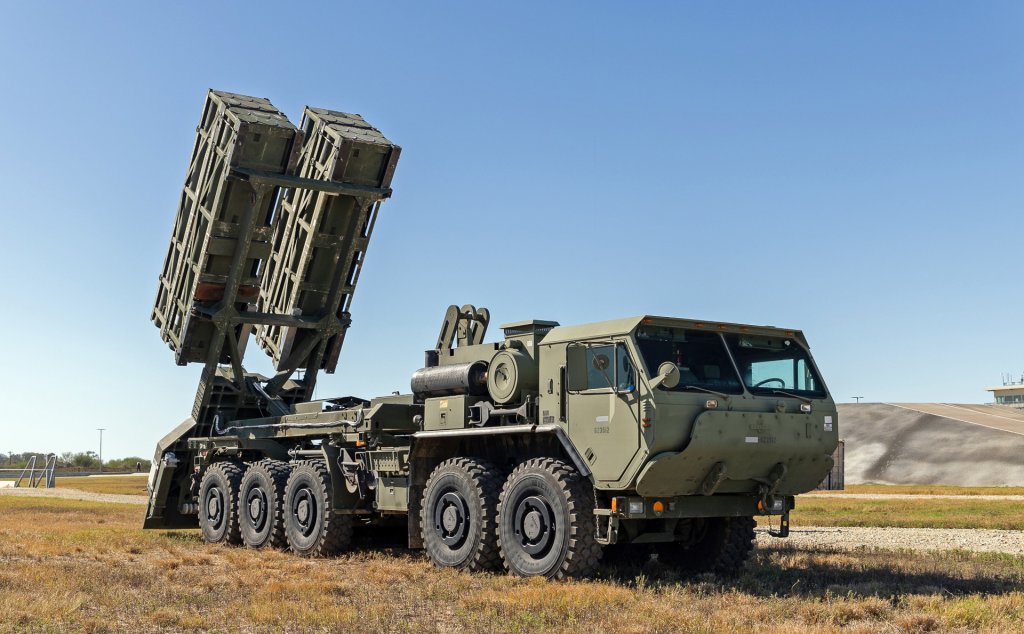 Lockheed Martin’s MKR18-based launcher vehicle. US Army Patrick Hunter
Lockheed Martin’s MKR18-based launcher vehicle. US Army Patrick HunterAdditional magazine depth for U.S. rocket artillery launchers, as well as expanding overall rocket artillery capacity both in the Army and the Marine Corps, could be valuable in various future contexts. In addition to engaging targets on land, shore-based launchers could also engage maritime targets relatively close to shore, including incoming waves of landing craft and amphibious vehicles. Launchers loaded with smaller rockets could be mixed in with ones with other payloads, including loitering munitions and anti-ship missiles, to provide an even broader array of effects against a swath of different target types.
The computer-generated Army video below depicts a scenario in which HIMARS and AML launcher vehicles engage various targets on land and at sea.

Smaller rockets would also allow MLRS, HIMARS, and other launchers, crewed or uncrewed, to conduct high-volume shoot-and-scoot attacks capable. Even a single launcher vehicle loaded with dozens of rockets would be able to saturate a relatively area.
The ongoing war in Ukraine has provided particularly pronounced evidence of the immense continued value of rocket and other artillery on modern battlefields. Ukrainian forces have made particularly good use of Western-supplied MLRS and HIMARS launchers firing guided rockets and ATACMS missiles against an array of different targets, including air bases and helicopter landing zones.
Smaller rockets could also provide a valuable lower-cost alternative to guided 227mm types and short-range ballistic missiles, in general, for use against certain targets, especially ones at shorter ranges. The average unit cost of a 227mm precision-guided rocket, regardless of specific variant, is around $160,000, according to Army budget documents. The price of each new PrSM, as well as that of the latest variants of ATACMS, is closer to $1.5 million.
As it stands now, the Army is at least pushing ahead with plans to add smaller rockets to the arsenals of its existing MLRS and HIMARS launchers. Work now on the JR3 training rockets could provide one potential pathway to that new operational capability.
Contact the author: [email protected]

 By The War Zone | Created at 2025-04-02 19:03:29 | Updated at 2025-04-03 15:27:29
20 hours ago
By The War Zone | Created at 2025-04-02 19:03:29 | Updated at 2025-04-03 15:27:29
20 hours ago







